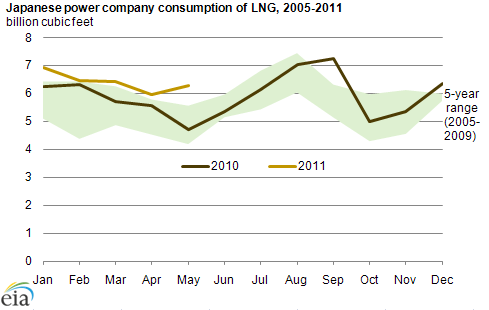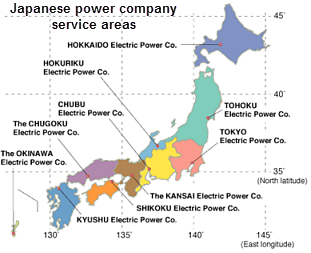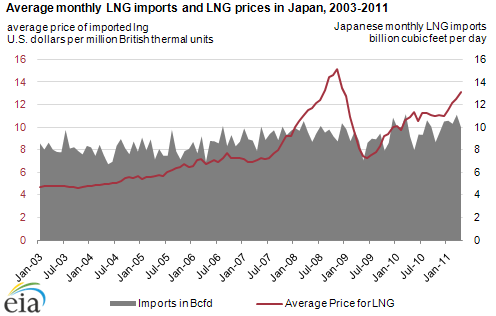
Japanese power companies using more LNG to generate electricity

Japan, the world's leading importer of liquefied natural gas (LNG), has consumed more LNG to generate electricity in January-May 2011 than over the same period in prior years. On average, Japan's electric power companies used more than six billion cubic feet per day (the tan line in the chart above) to produce electricity during the first five months of 2011.
Japan's nuclear power generation has been significantly curtailed in the aftermath of the March 11, 2011 Tohoku earthquake and accompanying tsunami, which led to the accident at Tokyo Electric Power Company's (TEPCO) Fukushima Daiichi nuclear power plant and subsequent outages at other plants. Only 19 of Japan's 54 commercial nuclear facilities — or fewer than 18 gigawatts (GW) out of a total commercial nuclear fleet of about 49 GW — are currently in operation. As a result, LNG consumption at power companies was up 30% in May 2011 compared to May in 2010.

Overall imports of LNG in Japan have been trending up since 2003. As of April 2011, Japan's total LNG imports accounted for more than 10 billion cubic feet per day (see gray area in chart below) of natural gas supply, most of which is used for power generation. The average price paid for LNG in Japan now exceeds $13 per million Britsh thermal units, or about three times the current price of natural gas at the Henry Hub in the United States.
